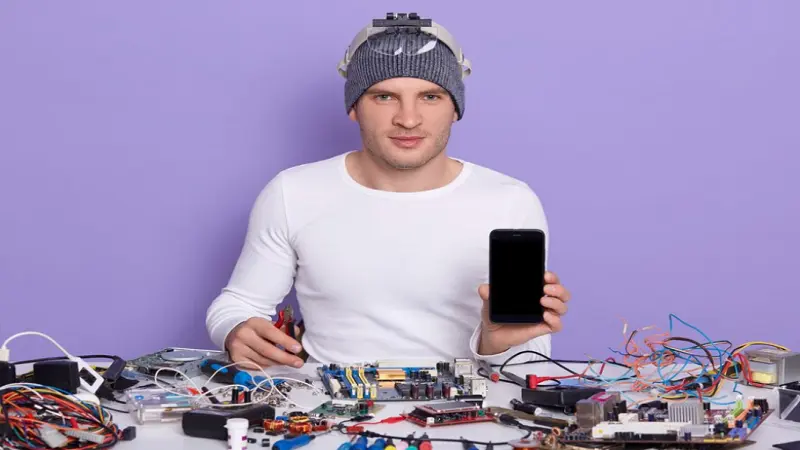The Concept of Invisible Technology
Invisible Technology Nguyen Si Kha • Someone Like You • 2022, as a concept, refers to the way certain technologies seamlessly integrate into our lives without us being overtly aware of their presence. Think of smartphones, which, while omnipresent, have become almost invisible in their operation. We interact with them effortlessly, unaware of the complex processes happening behind the scenes. This idea extends beyond physical devices to the very fabric of our digital interactions, which increasingly become part of our everyday lives in unobtrusive ways.
Nguyen Si Kha, known for his pioneering work in blending art with emerging technologies, has taken this notion a step further. His 2022 project, “Someone Like You,” delves into the subtleties of Invisible Technology Nguyen Si Kha • Someone Like You • 2022, exploring how it shapes our understanding of self and connection.
Nguyen Si Kha: A Brief Introduction
Nguyen Si Kha is an artist and technologist renowned for his ability to merge art with cutting-edge technology. His work often explores themes of identity, perception, and the intersection between the human and the digital. Kha’s projects are characterized by their innovative use of technology to provoke thought and evoke emotions, making them deeply engaging and thought-provoking.
“Someone Like You”: An Overview
Released in 2022, “Someone Like You” is a testament to Nguyen Si Kha’s unique approach to art and technology. The project is a multimedia installation that combines visual art, interactive elements, and cutting-edge technology to create a deeply immersive experience.
At its core, “Someone Like You” investigates how technology influences our perception of identity and relationships. By incorporating elements that blend physical and digital realms, Kha challenges viewers to reconsider their understanding of themselves and their connections with others.
The Interactive Experience
The installation’s centerpiece is an interactive display that utilizes advanced technologies like augmented reality (AR) and artificial intelligence (AI). As visitors engage with the installation, they encounter digital avatars that respond to their actions and emotions. These avatars are not merely representations but are designed to mimic and interact with the viewers in real time, creating a dynamic and evolving experience.
This interaction is facilitated by sensors and algorithms that track user behavior and adapt the digital avatars accordingly. The technology used here is a blend of sophisticated AI models and AR systems, making the avatars seem almost lifelike. As a result, the boundaries between the physical and digital worlds blur, making the technology behind the installation practically invisible to the users.
Thematic Exploration
“Someone Like You” explores several key themes, reflecting on how technology impacts our sense of identity and connection:
- Identity and Self-Perception: Through the interactive avatars, Kha explores how technology influences our self-perception. The avatars act as mirrors, reflecting not just our physical appearance but also our emotional states and behaviors. This reflection forces viewers to confront how technology shapes their understanding of themselves.
- Connection and Isolation: The project also examines how technology can both connect and isolate us. While the digital avatars provide a sense of interaction and connection, they also highlight the potential for digital relationships to lack depth compared to face-to-face interactions. This duality underscores the complex relationship between technology and human connection.
- Reality vs. Perception: By blending physical and digital experiences, Kha challenges viewers to question their perceptions of reality. The seamless integration of technology into the installation prompts questions about what is real and what is constructed, encouraging a deeper exploration of how technology shapes our perception of the world.
The Technological Aspects
The technology behind “Someone Like You” is as impressive as its artistic execution. Here’s a closer look at the key technological components:
- Augmented Reality (AR): AR technology allows for the overlay of digital elements onto the physical world. In Kha’s installation, AR is used to create interactive avatars that blend seamlessly with the real environment. This technology requires sophisticated algorithms and high-resolution displays to ensure that the digital elements feel integrated and realistic.
- Artificial Intelligence (AI): AI plays a crucial role in the installation’s interactivity. The avatars use machine learning algorithms to analyze and respond to user behavior in real time. This requires advanced AI models that can process complex data and adapt their responses accordingly, creating a dynamic and personalized experience for each visitor.
- Sensor Technology: To track user interactions, the installation employs a range of sensors, including motion detectors and cameras. These sensors capture data on user movements and emotional responses, which are then used to influence the behavior of the digital avatars. The integration of these sensors must be precise to ensure a seamless and immersive experience.
Impact and Reception
“Someone Like You” has received widespread acclaim for its innovative approach and thought-provoking themes. Critics have praised Nguyen Si Kha for his ability to make Invisible Technology Nguyen Si Kha • Someone Like You • 2022 visible through art, highlighting how the project challenges traditional notions of identity and connection.
The installation has also resonated with audiences, many of whom find the interactive elements both engaging and reflective. By presenting technology in such an intimate and personal manner, Kha invites viewers to confront their relationships with technology and its impact on their lives.
Broader Implications
Kha’s work reflects broader trends in how technology is perceived and utilized. The seamless integration of digital and physical experiences is becoming increasingly common, as technologies like AR and AI continue to advance. This trend raises important questions about the nature of reality, identity, and human connection in a digital age.
As technology becomes more integrated into our daily lives, the ability to make it “invisible” – or at least less obtrusive – becomes increasingly important. Projects like “Someone Like You” not only showcase the potential of these technologies but also encourage critical reflection on their impact.
Conclusion
Nguyen Si Kha’s “Someone Like You” is a compelling exploration of Invisible Technology Nguyen Si Kha • Someone Like You • 2022 and its effects on identity and connection. Through a blend of augmented reality, artificial intelligence, and interactive art, Kha creates an experience that challenges viewers to rethink their relationship with technology. By making the technology behind the installation almost invisible, Kha highlights both the potential and the complexity of living in a digital age.
As we continue to navigate a world where technology becomes ever more integrated into our lives, Kha’s work serves as a poignant reminder of the need to reflect on how these advancements shape our understanding of ourselves and our connections with others. In a world where technology often fades into the background, “Someone Like You” brings it to the forefront, offering a unique perspective on the invisible forces that shape our modern existence.




